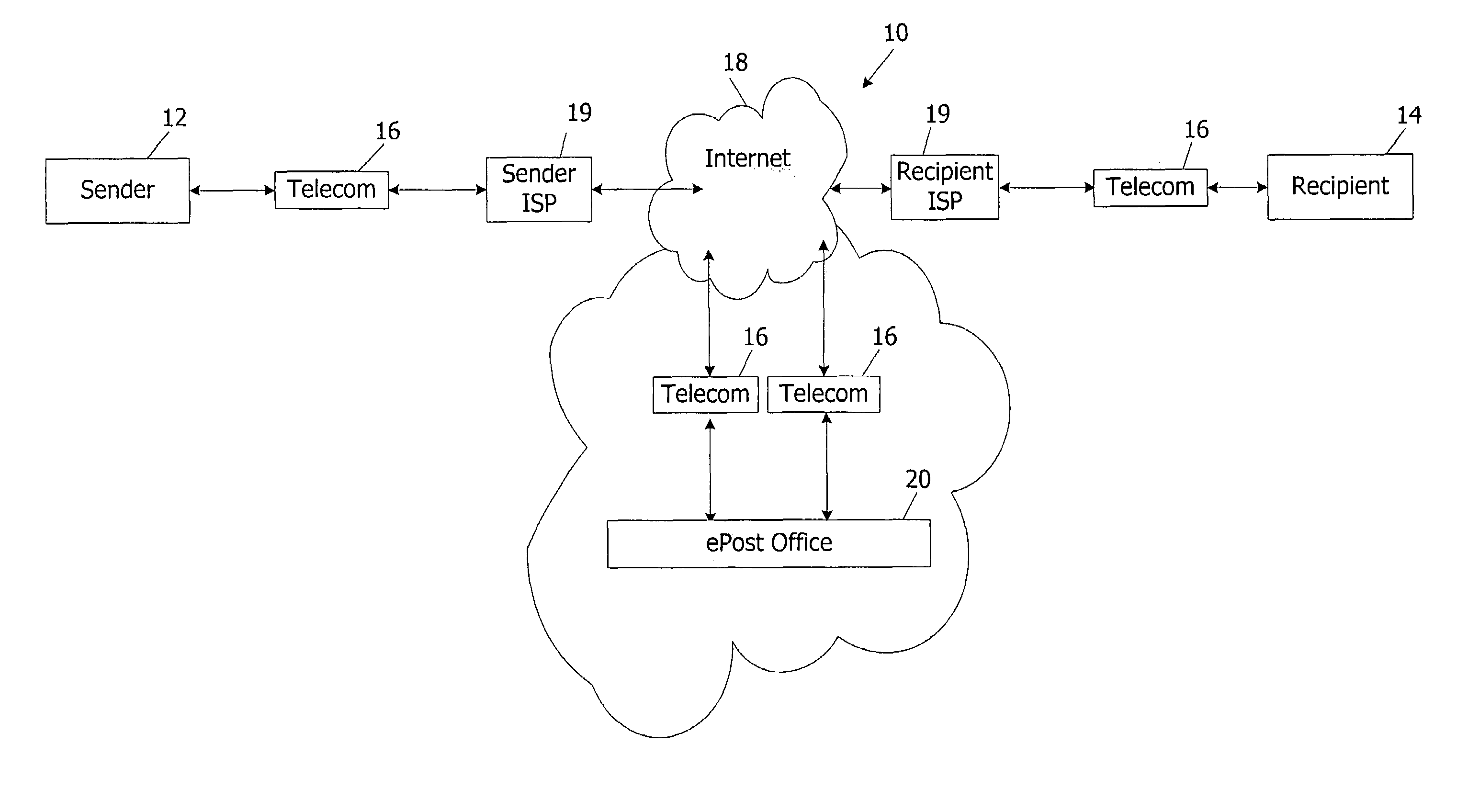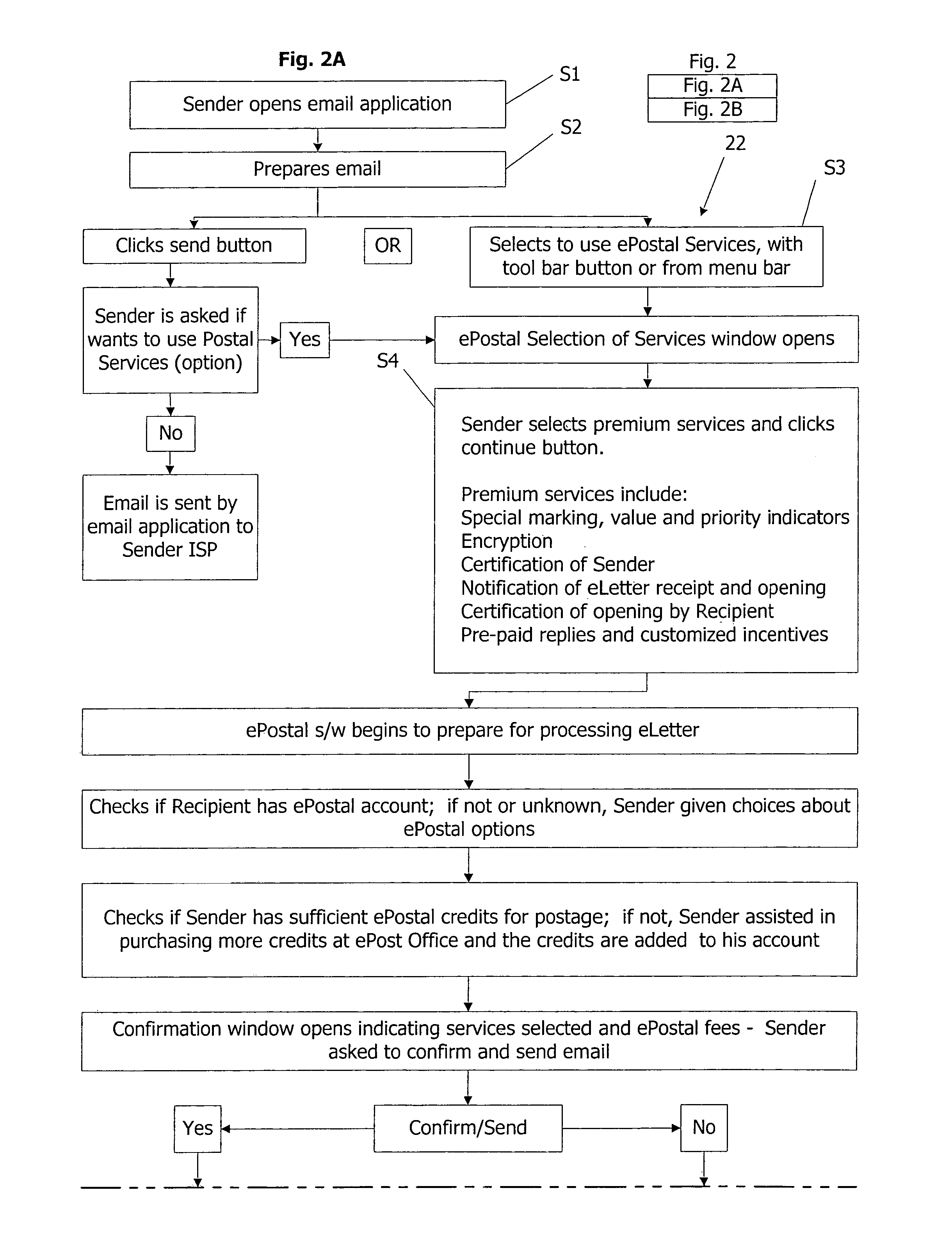However, this rapid increase in email has produced significant, and largely unanticipated, problems.
While email is an easy and inexpensive way to send someone else a message or document, those same attributes have led to recipients receiving unexpectedly large, and increasing, quantities of email, both wanted and unwanted.
The explosion in wanted email is, by itself, causing an ever-increasing overload problem.
Compounding this overload situation is the growing quantity of email that is both unwanted and unsolicited (and sometimes offensive).
This increasing volume of nuisance email not only frustrates email recipients but also restricts and constrains the optimal development of the Internet email system.
Other negative aspects of this nuisance email—such as reduced business efficiency, increased costs and expanded security risks—are well known.
Often, the magnitude of this repetitive and wasteful task drives recipients to just delete all emails, thereby risking the loss of information which is important and thus has value to recipients and senders alike.
This massive message problem of both overload and nuisance email has become so onerous that a better system and method of email document management is urgently required.
Its electronic counterpart has the potential—as yet unrealized—to grow and develop similar levels of acceptability and commercial effectiveness.
However, banner advertising is notoriously inefficient and plagued by low click-thru rates.
But, email marketing cannot reach its full potential unless there is a better way to manage the growing email volume and clutter.
At present, the email highways have so much “noise” that it distracts recipients from giving sufficient attention to legitimate online email advertising.
Today, it is difficult for a recipient to understand the importance, value and priority of a particular email until it is opened and reviewed.
And, this opening and reviewing process is time consuming, and exposes the recipient to technical risks (such as viruses and worms) as well as content risk (such as offensive words and pictures).
A corollary problem with the Internet mail system—in addition to both overload and nuisance email—is security.
The email security process that now exists is inadequate and impedes expanded usage of the Internet for many potential commercial purposes.
Many email applications have encryption procedures, but their procedures are too complex for many email users, or not reasonably and / or generally available in needed situations.
As such, email security represents another problem looking for an effective solution.
HIPAA has declared that emails (and faxes) which are not secured by encryption are unacceptable for communicating personal health care information (such as diagnosis codes, test results and certificates of medical necessity) among doctors, other health care providers, and insurance organizations.
Technology is not readily available, or is not acceptably cost-effective for many health care providers.
For wanted email, there is currently no known solution to the email overload and priority differentiation problems described above.
Some, but not all, unsolicited email is blocked.
Unfortunately, some unsolicited-and-wanted email is blocked, and some unsolicited-and-unwanted email still comes through.
Even worse, some wanted (and solicited and expected emails) are also blocked, and a recipient does not know at the time that they have been blocked.
Included among the many drawbacks of these nuisance email filtering services and software are that they:Block many wanted emails from reaching recipients.
One information technology market research firm has estimated that this problem cost businesses $3.5 billion in 2003.Allow many economically valueless, unwanted, unsolicited and offensive emails to reach recipients.
And, these cost businesses an estimated $10 billion in 2003.Do not filter or screen email for content risk by any general, public standard.Do not universally screen email for technical risk.Do not provide any publicly accepted priority or value indicators on emails so recipients can quickly see and automatically sort such higher priority emails from other lower priority email.Do not provide any means to give incentives to recipients to open priority-designated email.Do not provide for any integrated email tracking service for senders or recipients.Do not offer any officially recognized notification of receipt or opening.Do not offer any comprehensive security measures other than anti-virus screening.
There are known email encryption services, but these services also are not part of a complete service package that addresses the above described email overload and nuisance email problems as well.
In addition, most current email encryption and digital signature methods are complex for common email users, including those procedures that are part of current generally-available email applications.Do not work in many cases easily and seamlessly from within the user's email application.
While some may find this service attractive, it suffers in that the sender cannot use the convenience of his own mail box (i.e., his own email application) to mail the document.
Second, this system is still mostly a physical, non-electronic process with all the limitations inherent in physical mail delivery.
Third, the recipient cannot make use of his electronic mailbox (that is, his email application) to receive the document.
In addition, these partial services often involve cumbersome procedures including, for example, requiring senders to leave their email applications and log into the service provider's website.
 Login to View More
Login to View More  Login to View More
Login to View More 


